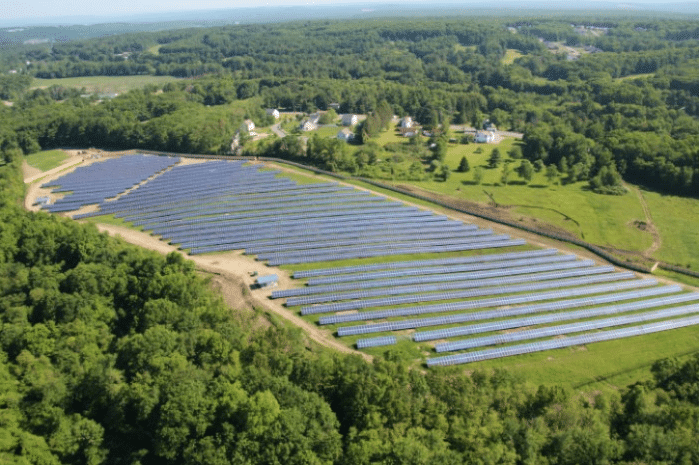The past year in the Massachusetts solar industry has been one of change.
After much back and forth, the state’s Department of Energy Resources (DOER) has revised the net-metering (NEM) program in the state (ultimately reducing the reimbursement rates), limited National Grid (the state’s largest utility) the enormous fixed-charge increases it wanted and denied its proposed solar-specific fees, and finalized the extension its Solar Renewable Energy Credit (SREC-2) program last month.
Now the next gold rush is about to begin.
Fueled by the changes the proposed reductions in net-metering, a 407 MW pipeline of community-solar projects had been approved by March 13 and are expected to be completed by the end of next year, says Austin Perea, a solar markets analyst with GTM Research told pv magazine. There is no publicly available information on how many of these projects are funded or how many subscriptions there are.
“Much of what is driving community solar deployment in Massachusetts policy-related constraints surrounding the NEM cap,” Perea says “The NEM cap was initially extended in the last spring, but it reduced NEM compensation by 40% for exported generation, meaning all community solar generation.”
To ensure community solar projects would be compensated at the full retail rate, projects must have acquired its NEM allocations by September. So the 400 MW bonanza in the next two years will largely be fueled by these systems, Perea said. The state currently has only 64 MW of community solar installed, so the massive increase will elevate Massachusetts into the top tier of community-solar states.
As of December, Minnesota has the highest pipeline of community solar projects with more than 2.2 GW expected to be added, and on Monday Maryland will start taking applications for a proposed 200 MW of community solar for a three-year pilot program.
Perea said the ultimate disposition of community solar in Massachusetts will depend on the roll-out of the state’s new SMART incentive program, under which a procurement auction will determine the initial incentive levels under the successor to the state’s SREC program.
This content is protected by copyright and may not be reused. If you want to cooperate with us and would like to reuse some of our content, please contact: editors@pv-magazine.com.








By submitting this form you agree to pv magazine using your data for the purposes of publishing your comment.
Your personal data will only be disclosed or otherwise transmitted to third parties for the purposes of spam filtering or if this is necessary for technical maintenance of the website. Any other transfer to third parties will not take place unless this is justified on the basis of applicable data protection regulations or if pv magazine is legally obliged to do so.
You may revoke this consent at any time with effect for the future, in which case your personal data will be deleted immediately. Otherwise, your data will be deleted if pv magazine has processed your request or the purpose of data storage is fulfilled.
Further information on data privacy can be found in our Data Protection Policy.